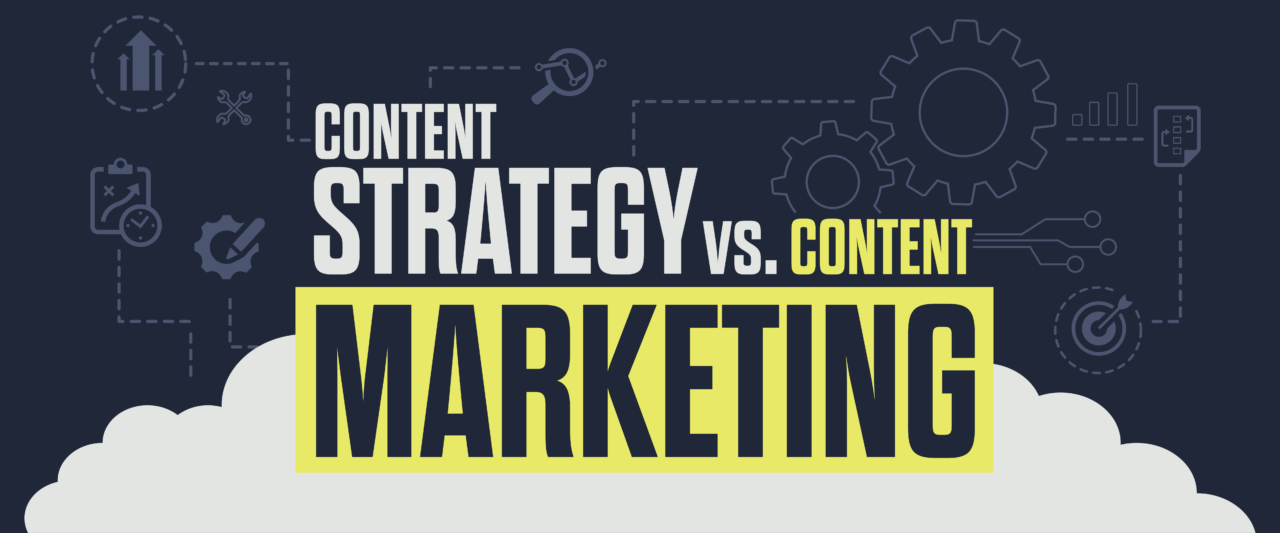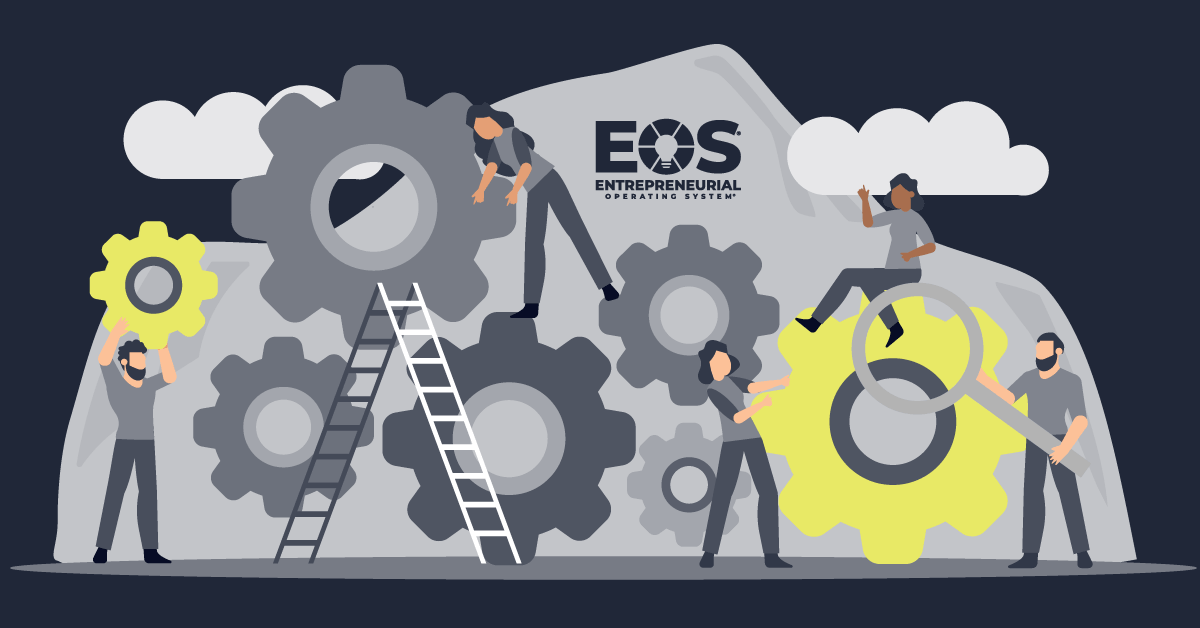What’s the difference between content strategy and content marketing? In layperson’s terms, your content strategy is how your content is produced and marketing helps put it in front of your target audiences.
So, which comes first? There’s no chicken-and-egg argument here. Your content strategy must be defined before you get to marketing it.
Developing a content strategy
Creating a strategy for your content plan is no different than other business strategies. Below is a chronological checklist your organization can implement when formulating your content strategy.
![]()
1. Define your business goals.
Long-term business goals serve as guides for every business decision and your content should be no different. Your business goals should be the backbone of your content strategy and serve as the North Star for every piece of content. In simple terms, what do you want your business to look like in 10 years?
![]()
2. Identify your primary audiences.
Every business has a litany of stakeholders. Identifying the most important ones for your organization is critical to target your content to the right people. Your audiences could include your end users, your employees, lawmakers or a variety of other groups. It’s okay to have several audiences listed in your content strategy.
![]()
3. Outline your business objectives.
Objectives need to be specific and include a key audience from your list of stakeholders. They must have a timeframe and be measurable. Every objective should end in one of two ways:
1. A behavior change.
2. An attitude or awareness shift.
If one of your business objectives is to increase sales among a certain demographic by a certain date, that is a behavior change objective. An attitude or awareness change objective aims to influence perceptions from a key stakeholder by a certain date. Knowing which one your business is chasing will make content production simpler and more impactful.
![]()
4. Create your content strategy.
With the groundwork done, you’re ready to put pen to paper on your organization’s content strategy. Remember, your strategy is how your content can help your organization reach the business objectives you defined earlier.
Here are some ideas for a content strategy focused on awareness or attitude change:
-
-
- Write articles on how your product or service improves the lives of your key stakeholders.
- Author guest content or thought-leadership content about larger industry issues for which your organization can be a leader.
- Leverage social media to share the news of how your organization offers a solution for specific needs. Speaking to the topic at large instead of just your product can help position your business as a credible resource.
-
-
Some ideas for content strategy related to a behavior change include:
- Author articles with interactive content to guide your key audiences to your organization’s services.
- Share social media content that gives your audiences a reward for giving their email or other information needed to refine sales strategies.
- Create videos featuring customer success stories to spur more sales among a particular demographic.
![]()
5. Define your tactics and timeline.
Now that you know how your content can help you achieve your business objectives, we can get creative in how we get there.
Determine your content type(s) and mix. Two articles and one video? Four social posts per week and one article? Your business objectives and key audience insights will help you make this decision.
Choose your content frequency per channel and content type. Is it weekly? Monthly? What makes the most sense for your team and your goals?
Developing a content marketing plan
With your strategy, tactics and timeline defined, you must now make sure your audience actually sees your content. Much like your overall marketing plan gets your offerings in front of your audience, you must market your own content via the appropriate channels at the appropriate times to make it go as far as possible.
Good content can only go so far without good marketing. Most content can be multiuse, meaning your blog post can be shared on social and your videos can go on your website or social media (or both).
Here’s a content marketing checklist to consider after you’ve developed your strategy:
-
-
- Be intentional with a content calendar. Create an editorial calendar to keep track of what content is going out and when, then stick to it.
- Lead with the PESO method for content marketing. Touching all areas of paid, earned, shared and owned media (PESO) is a sound way to get the right content in front of the right people, while making your content efforts go further (see “Repurpose your content” below).
- Consider whether your content is helpful to your audience. Making content just to make content wastes time and resources. Consider using a professional writer to make your written content as impactful and credible as possible.
- Incorporate search engine optimization (SEO) into all written content. A professional and digital-savvy writer can do this for you — and include backlinks and outbound links to help optimize content performance.
- Lean on team members (or an agency) with expertise. Your social media experts know the best times of day to post. They know what makes content interactive and they know what your social audience will enjoy seeing. The same goes for video. High-quality and visually engaging videos go far. Choose the right people to be on (and behind the) camera.
- Stay in the know. Don’t post and ghost. Keep an eye on how content is performing. Adjustments mid-strategy are perfectly normal and can be a smart decision.
- Repurpose your content. Make your efforts more efficient by repurposing efforts to expand the life of your content. Quotes from a video could turn into a written piece and an article could lend itself to a graphic for social media. A little creativity goes a long way.
- Track and measure digital insights. Not just with SEO, but in every component related to content. What blog posts perform best on your website? What topics does your organization shine with again and again? What metrics can you find to point you in the most optimal direction?
-
Your content is the voice of your organization. Ensuring your content is powerful, impactful, strategic and promoted will help you achieve your business goals.
Need some ideas or guidance on your content strategy or marketing? The team at Lessing-Flynn is here to help. The right agency partner can make your content go twice as far. Contact us here.
LF Newsletter Alert
Want Lessing-Flynn to rock the socks off your inbox with insights and more?




